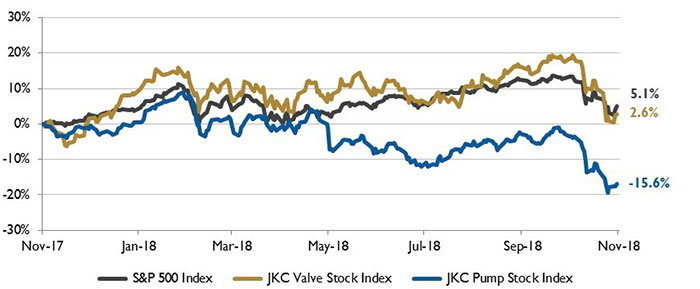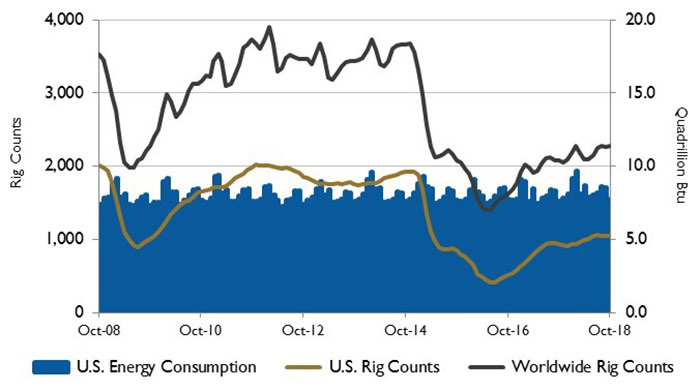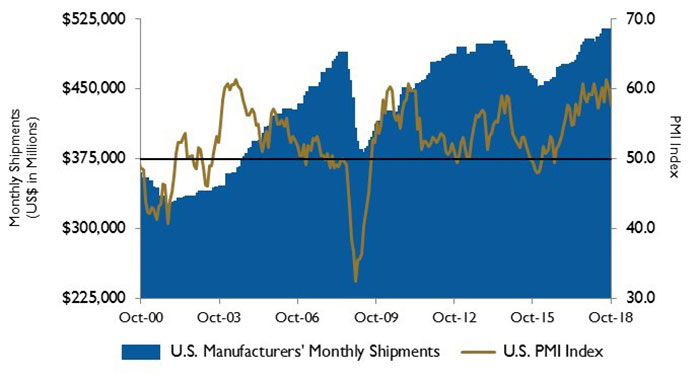Pump Market Analysis
Jordan, Knauff & Company
12/14/2018
The Jordan, Knauff & Company (JKC) Valve Stock Index was up 2.6 percent over the last 12 months, while the S&P 500 Index was up 5.1 percent. The JKC Pump Stock Index fell 15.6 percent in the same time period.1 The Institute for Supply Management’s Purchasing Managers’ Index (PMI) slowed from 59.8 percent in September to 57.7 percent in October, falling below both its six- and 12-month averages. The New Orders index had the largest fallback, declining 4.4 points to 57.4 percent. This is the first time in a year and a half that new orders have been below 60 percent. The stronger dollar and slowdown in global trade may be affecting manufacturing, as the Export Orders index fell to 52.2 percent, the lowest since 2016.
 Figure 1. Stock Indices from Nov. 1, 2017 to Oct. 31, 2018. Local currency converted to USD using historical spot rates. The JKC Pump and Valve Stock Indices include a select list of publicly traded companies involved in the pump and valve industries, weighted by market capitalization. Source: Capital IQ and JKC research.
Figure 1. Stock Indices from Nov. 1, 2017 to Oct. 31, 2018. Local currency converted to USD using historical spot rates. The JKC Pump and Valve Stock Indices include a select list of publicly traded companies involved in the pump and valve industries, weighted by market capitalization. Source: Capital IQ and JKC research.  Image 2. U.S. energy consumption and rig counts. Source: U.S. Energy Information Administration and Baker Hughes Inc.
Image 2. U.S. energy consumption and rig counts. Source: U.S. Energy Information Administration and Baker Hughes Inc. Image 3. U.S. PMI and manufacturing shipments. Source: Institute for Supply Management Manufacturing Report on Business and U.S. Census Bureau.
Image 3. U.S. PMI and manufacturing shipments. Source: Institute for Supply Management Manufacturing Report on Business and U.S. Census Bureau.
